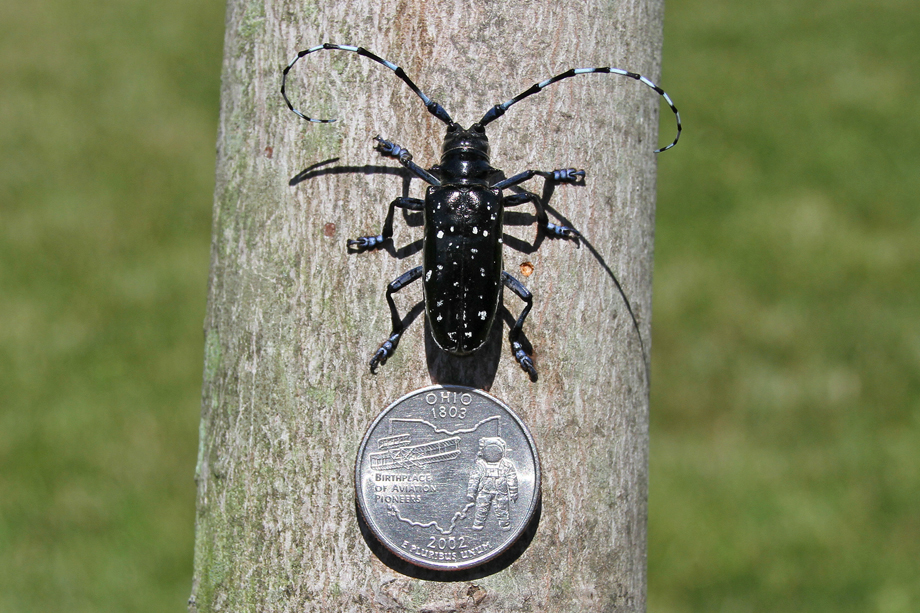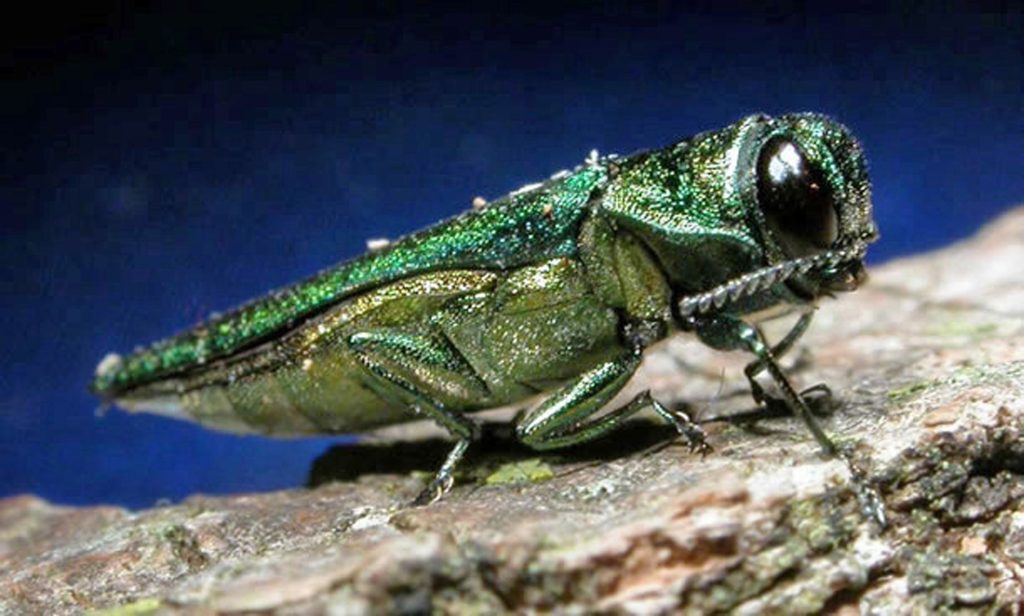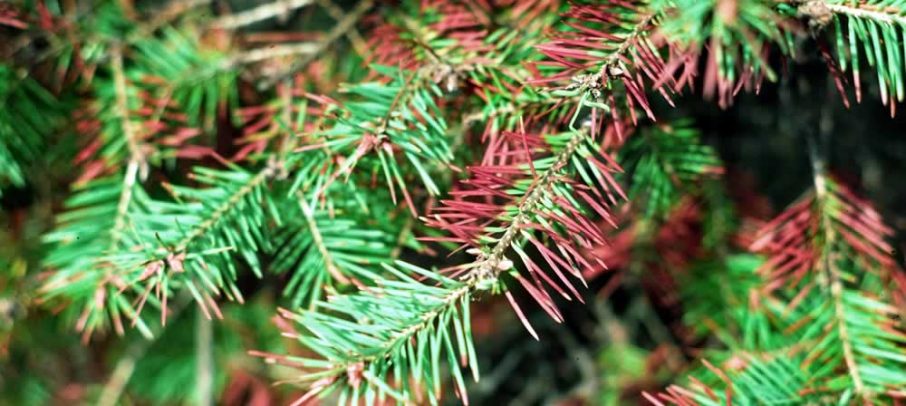Articles
Asian Longhorned Beetle
Anoplophora glabripennis

Asian longhorned beetle (ALB) is an exotic wood-borer that poses a severe threat to natural and urban forests in North America if it is not eradicated and becomes widespread. ALB has a wide host range that includes tree species in 12 genera with maples (Acer spp.) being among the most ecologically and economically significant. ALB is native to China and Korea, and was likely transported to the United States in wooden packing material such as pallets, crates or dunnage. First detected in North America in 1996 in New York City, additional infestations have since been detected in New York, New Jersey, Illinois, Massachusetts, Ohio, and Ontario, Canada. The beetle has been successfully eradicated in Illinois, New Jersey, and parts of New York and Ontario. Eradication efforts continue in other states and Ontario where ALB has been found.
Emerald Ash Borer
Agrilus planipennis

The emerald ash borer (EAB) is an invasive wood-boring beetle, native to parts of Asia. It was detected in the Detroit, Michigan and Windsor, Ontario areas in 2002, but likely existed undetected in North America since the 1990s. Experts believe the EAB was introduced to Detroit hidden inside wooden packaging materials or shipping crates. Since its arrival, the EAB has been rapidly spreading across North America, devastatingly affecting the ash tree population, killing up to 99% of ash trees in its path. The EAB continues to spread in all directions across North America where ash trees are present.
Magnolia Scale
Neolecanium cornuparvum

The magnolia scale is one of the largest and most conspicuous scale insects known to occur in Ohio. Adult females may reach nearly ½ inch in diameter when fully grown. This soft scale is shiny, tan-brown and smooth. As the scales grow, they are often covered with a white mealy wax. This wax is lost at the time that the crawlers emerge.
Needle Cast
Rhizosphaera


Rhizosphaera needle cast causes needles to turn brown or in the case of the Colorado blue spruce, a purplish-brown, and fall from the tree prematurely. Needles of any age and on any part of the tree may be infected, but the disease often starts on 1 year or older needles on the lower branches of the tree, attacking several branches at one time. Lower branches are commonly affected because the foliage is denser and shaded, receiving less air flow and holding moisture for longer periods of time compared to higher branches. If conditions are conducive in the following years, the disease will spread within the tree, from the bottom up and inside out.